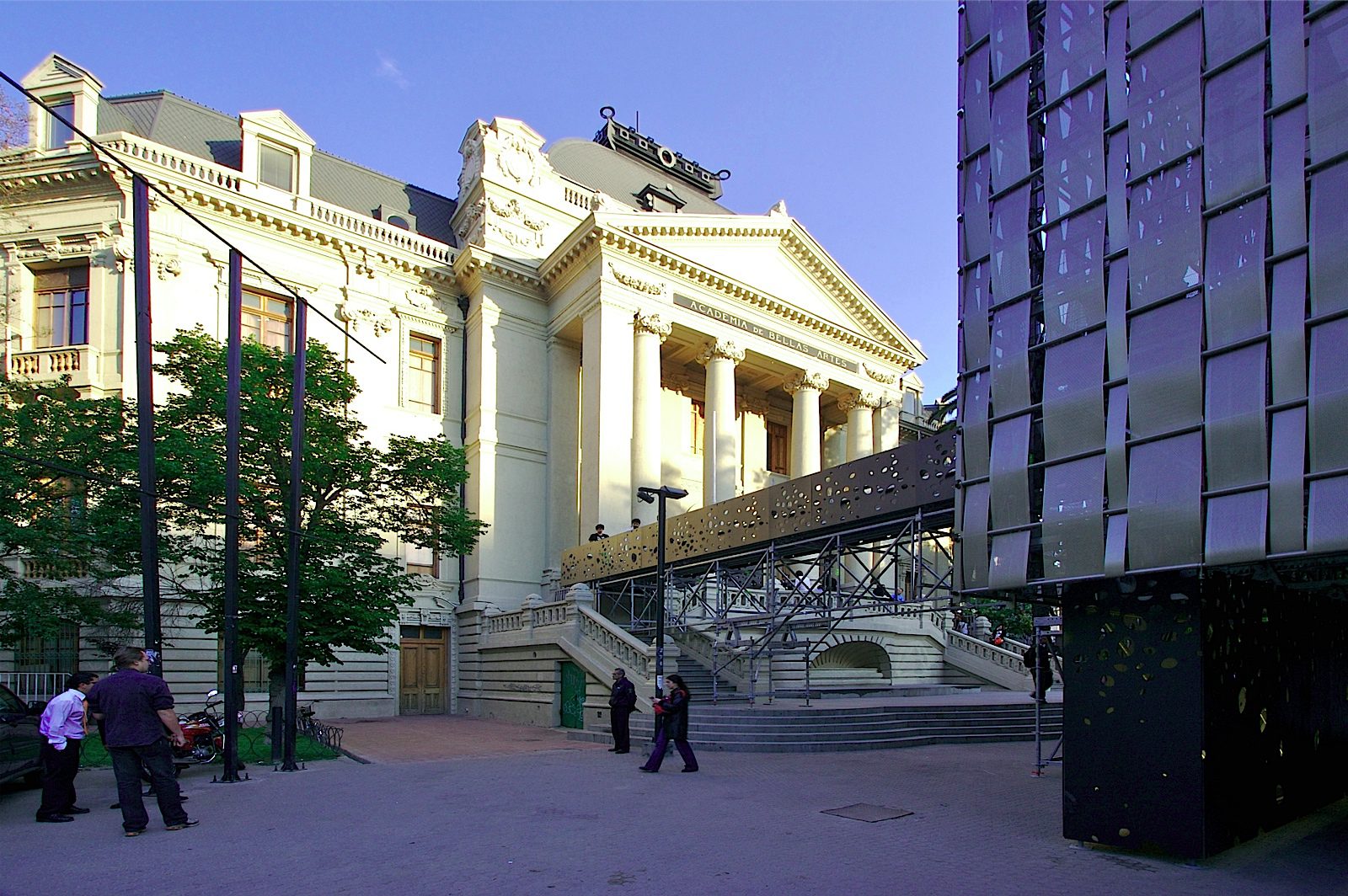“The woven aluminium façade of the Chilean Pavilion allowed direct access of daylight, air and views from the interior.”
The aluminium-zinc alloy strips allow the light to filter through the envelope of the XVI Chilean Architecture Biennale Pavilion and give this building a textile quality. 100% of the materials used in the construction of this temporary pavilion will be recycled.
The proposal for the installation of the XVI Chilean Architecture Biennale, “Towards an architecture that cares about our planet”, started with the selection of the venue: the Contemporary Art Museum in Santiago’s Forestal Park. Even if the building was not big enough to host the Biennale, it had plenty of virtues: a central location with good accessibility and the possibility to present the Biennale to a wider audience than just the architectural design community.
The lack of space at the interior of the museum gave Assadi & Pulido Architects the opportunity to take that part of the exhibition in the hands of the (energetic and experimental) students to an outside, open, public space: the plaza in front of the museum, which has been the stage for events linked to performing arts. The “Juggler’s Square” was proposed as a public platform over which a temporary pavilion would be built, with similar proportions to the interior of the museum, which would host the architecture schools’ exhibition.
The skin of the Pavilion was woven from aluzinc sheet, produced by Hunter Douglas, which allowed light to filter through the building envelope, giving the structure a textile-like quality. Thus the pavilion spoke of radical contemporary architecture yet harked back to the origins of architecture in woven timber structures, as observed by architect Gottfried Semper in his 1851 publication The Four Elements of Architecture.
Aluzinc is a zinc coated aluminium sheet, typically used to form very durable roofing and cladding. The façade of the Pavilion was made up of a randomly organized aesthetic pattern of openings, which allowed direct access for daylight, air and views from the interior. The strips of aluzinc woven into the structure of the Pavilion varied in thickness from 0.4 to 1 mm and in width from 140 mm to 510 mm – in essence these strips were recycled off-cuts from Hunter Douglas’ normal production. On completion of the Biennale and the disassembling of the Pavilion, 100% of the aluminium sheet structure was recycled.
The perforated aluminium strips allow light to filter into the pavilion, providing delight on a very tight budget. The transparency of the woven perforated aluminium cladding of the XVI Chilean Architecture Biennale Pavilion is revealed at night.
© Felipe Assadi & Francisca Pulido Architects


